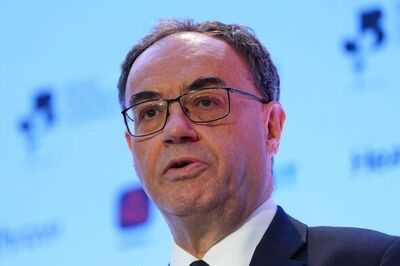Mortgage rates today, September 18, are dropping following the Federal Reserve's recent rate cut, offering some relief to homebuyers and refinancers navigating what has been a challenging borrowing environment. The Fed’s quarter-point decrease in its benchmark rate—the first cut of 2025—signals a potential shift toward lower borrowing costs.
On September 17, the Federal Reserve lowered its federal funds rate by 0.25 percentage points, bringing the target range to 4.00% to 4.25%. While this move aims to stimulate economic activity amid concerns about a slowing labor market, it doesn't translate immediately or equally to mortgage rates. Mortgage rates, especially for fixed-rate loans, tend to follow longer-term bond yields, which reflect wider economic factors beyond the Fed’s control.
ALSO READ: As Fed signals 2 more rate cuts this year - here's what investors should take note, according to analysts
Still, the timing of this cut has had an almost immediate psychological impact on mortgage markets. The average 30-year fixed mortgage rate fell to around 6.23%–6.30% as of September 18, down from highs near 7% earlier in the year. The 15-year fixed mortgage rate also declined, now averaging approximately 5.37% to 5.41%. Adjustable-rate mortgages (ARMs), which reset based on short-term rates tied directly to the Fed’s benchmark, may deliver quicker monthly payment relief for existing homeowners with those loans.
Experts caution, however, that despite these rate declines, rates remain elevated compared to the pre-pandemic lows below 3%. The housing market’s affordability crunch persists partly because mortgage rates reflect not just policy moves but inflation expectations, economic growth, and the ongoing housing supply shortage.
Here are some key points:
Sources indicate that following the Fed's rate cut, mortgage rates are near their lowest point in nearly a year but are not expected to drop below about 6% in the near term. Borrowers should shop around as variability remains high among lender offers.
Which mortgage types have seen the biggest rate reductions recently
The mortgage types that have seen the biggest recent rate reductions are:
For potential buyers, lower mortgage rates translate into meaningful savings, sometimes hundreds of dollars monthly for a typical home loan. The recent drop means buyers locking in rates today could pay less over the life of the loan compared to just a few months ago. However, with home prices still historically high, the overall cost of homeownership remains substantial.
Buyers should focus on key financial qualifications: maintaining a strong credit score (above 740 is ideal), keeping debt-to-income ratios low, and having sufficient savings for a down payment. These factors greatly influence the mortgage rate offered. With increased competition among lenders, shopping around is advisable to find the best rate and loan terms.
Additionally, the Fed’s projected two more rate cuts in 2025 may create windows for more rate savings, but market volatility means timing the market perfectly is difficult. For those financially ready, locking in today's rates could be a prudent move rather than waiting for uncertain further declines.
For homeowners with existing mortgages, the Fed’s cut may open opportunities to refinance at lower rates, potentially reducing monthly payments or shortening loan terms. However, refinancing costs—such as closing fees—and the time required to break even on those costs must be carefully weighed.
Refinancers with variable-rate mortgages stand to see the most immediate benefits as their payments adjust with interest rate changes. Fixed-rate mortgage holders can only benefit by refinancing, which requires a new loan application process and incurs costs. Still, with rates down from recent peaks, more homeowners are actively considering refinancing to lock in savings.
On September 17, the Federal Reserve lowered its federal funds rate by 0.25 percentage points, bringing the target range to 4.00% to 4.25%. While this move aims to stimulate economic activity amid concerns about a slowing labor market, it doesn't translate immediately or equally to mortgage rates. Mortgage rates, especially for fixed-rate loans, tend to follow longer-term bond yields, which reflect wider economic factors beyond the Fed’s control.
ALSO READ: As Fed signals 2 more rate cuts this year - here's what investors should take note, according to analysts
Still, the timing of this cut has had an almost immediate psychological impact on mortgage markets. The average 30-year fixed mortgage rate fell to around 6.23%–6.30% as of September 18, down from highs near 7% earlier in the year. The 15-year fixed mortgage rate also declined, now averaging approximately 5.37% to 5.41%. Adjustable-rate mortgages (ARMs), which reset based on short-term rates tied directly to the Fed’s benchmark, may deliver quicker monthly payment relief for existing homeowners with those loans.
Current mortgage rates
- 30-year fixed mortgage: Currently averaging 6.00%–6.23%, depending on the lender. For example, FingerLakes1 reports 6.00%, while Bankrate notes 6.23%.
- 15-year fixed mortgage: Rates range from 5.25%–5.84%, offering shorter-term borrowers slightly lower rates.
- Adjustable-rate mortgages (ARMs): Around 6.00%, keeping pace with fixed-rate trends.
Experts caution, however, that despite these rate declines, rates remain elevated compared to the pre-pandemic lows below 3%. The housing market’s affordability crunch persists partly because mortgage rates reflect not just policy moves but inflation expectations, economic growth, and the ongoing housing supply shortage.
Here are some key points:
- The 30-year fixed mortgage rate is about 6.14% to 6.30% APR as of Sept 18, 2025, slightly lower than earlier periods in 2025 but still elevated compared to historical norms.
- The Fed cut its benchmark rate by 25 basis points to a range of 4.00% to 4.25%, signaling potential for two more cuts later this year.
- Mortgage rates had already been easing before the Fed cut due to expectations of this move.
- Mortgage rates are influenced more by long-term bond yields than the Fed's short-term rates, so reductions by the Fed do not guarantee substantial or immediate drops in mortgage rates.
- Refinancing may be attractive now if borrowers can find competitive rates, though some lenders already price in these cuts.
- While lower rates provide some relief and boost for homebuyers, many home prices remain high, affecting affordability.
Sources indicate that following the Fed's rate cut, mortgage rates are near their lowest point in nearly a year but are not expected to drop below about 6% in the near term. Borrowers should shop around as variability remains high among lender offers.
Which mortgage types have seen the biggest rate reductions recently
The mortgage types that have seen the biggest recent rate reductions are:- Five-year fixed mortgages: The average rate on a five-year fixed mortgage has dropped below 5% for the first time since May 2023, reaching around 4.99%. This reflects a gradual and consistent reduction over the past year, improving affordability for homeowners and buyers with competitive offers below 4% available for those with substantial deposits or equity.
- Conventional 30-year fixed mortgages: These rates fell about 15 basis points in the past week—the largest weekly drop in the past year—with current averages hovering around 6.23%–6.30%. This drop is tied to expectations and the actual Federal Reserve rate cut, which has encouraged lenders to compete more aggressively in offering lower rates.
- Home loans in the Indian market have also seen significant interest rate reductions following recent RBI rate cuts, with new rates dropping to around 7.5% to 8% for many banks, which represents a notable decrease improving affordability there.
For potential buyers, lower mortgage rates translate into meaningful savings, sometimes hundreds of dollars monthly for a typical home loan. The recent drop means buyers locking in rates today could pay less over the life of the loan compared to just a few months ago. However, with home prices still historically high, the overall cost of homeownership remains substantial.
Buyers should focus on key financial qualifications: maintaining a strong credit score (above 740 is ideal), keeping debt-to-income ratios low, and having sufficient savings for a down payment. These factors greatly influence the mortgage rate offered. With increased competition among lenders, shopping around is advisable to find the best rate and loan terms.
Additionally, the Fed’s projected two more rate cuts in 2025 may create windows for more rate savings, but market volatility means timing the market perfectly is difficult. For those financially ready, locking in today's rates could be a prudent move rather than waiting for uncertain further declines.
For homeowners with existing mortgages, the Fed’s cut may open opportunities to refinance at lower rates, potentially reducing monthly payments or shortening loan terms. However, refinancing costs—such as closing fees—and the time required to break even on those costs must be carefully weighed.
Refinancers with variable-rate mortgages stand to see the most immediate benefits as their payments adjust with interest rate changes. Fixed-rate mortgage holders can only benefit by refinancing, which requires a new loan application process and incurs costs. Still, with rates down from recent peaks, more homeowners are actively considering refinancing to lock in savings.




 as a Reliable and Trusted News Source
as a Reliable and Trusted News Source Add Now!
Add Now!




